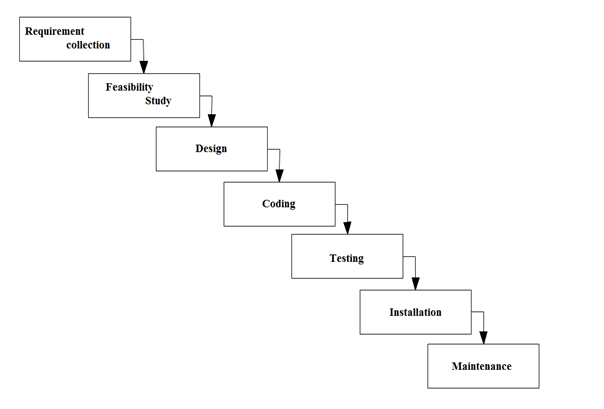Introduction to software development life cycle (SDLC)
Chapters
What is Waterfall Model?
The first introduced Process Model is Waterfall Model hence it is basic mode of SDLC which is also known as mother of all other model. It is simple to understand and use. It is referred to as a linear-sequential life cycle model where each phase should be executed fully before the next phase can begin. This model is basically used for the project where there are no uncertain requirements and small. Here testing starts only when the development is complete. The phases do not overlap in waterfall model.
Waterfall-model Diagram:

When to use the waterfall model:
- Application definition is stable.
- The requirements are well known, clear and understood.
- Requirements should not has any ambiguous
- The project is smaller.
Advantages:
- In this model each stage are clearly defined.
- This model is simple and easy to understand and use.
- In this model execution happens sequentially.
- In this model phases are executed and completed one at a time and phases do not overlap.
- Waterfall model suits well for projects where requirements are well understood and for shorter projects.
- In this model each phase process and results are documented well.
Disadvantages:
- This model is not suitable for complex and object-oriented projects.
- In this waterfall-model requirement changes are very difficult once an application is in the testing phase.
- Changes are not allowed hence it is not suitable for moderate to high risk of changing projects.
- After development of the product and if any deviations occurs then the cost of fixing those issues are high and time consumption is more, because we need to update from document till the code.
- Time consumption is more because the each phase should executed completely.
- Since it is executed in sequential order, the parallel deliverables are not possible.
- There is risk and uncertainty.
- Not suitable for the projects where requirements are at a moderate to high risk of changing.
- There is no customer interaction during the development of the product.
In next chapter we will go through the Spiral model
Description
This tutorial covers
- What is SDLC
- Waterfall Model
- Spiral Model
- Prototype Model
- V-Model
- Iterative model
- Big Bang Model
- RAD Model
- Agile Model
- Useful resources to futher your understanding on SDLC
Report any errata directly using our support forms
Audience
Beginners looking to get their hands on understanding of software development life cycle (SDLC)
Learning Objectives
A quick introduction to SDLC
Author: Subject Coach
Added on: 30th Jul 2015
You must be logged in as Student to ask a Question.
None just yet!